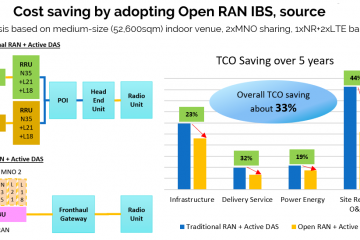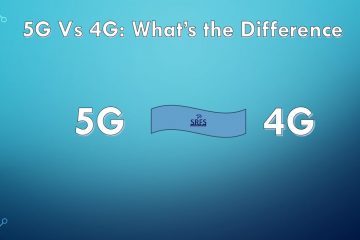The cellular signals of mobile providers are extend and distribute across a building using in-building solutions (IBS), which are telecom solutions. These technologies provide excellent mobile communication in interior settings including offices, malls, hospitals, stadiums, and airports. Given that indoors is where most daily data intake occurs, IBS has flourished recently as a result of these benefits.
IBS uses several hubs and other pieces of equipment to offer inside coverage, spreading the signal to several antennas. With the help of these solutions, wireless signal quality may be strengthen, ensuring seamless wireless communication for PDAs, laptops, and mobile phones. Automating architectures that are primarily driven by cloudification, softwariaztion, virtualization, and fiberization is the primary tenet of IBS.
IBS network’s cornerstones of technology:
To provide the network capacity necessary for IBS Telecom, the 5Ss—silicon, software, systems, standards, and spectrum—are in alignment. To address the complex indoor internet requirements in places like hotels, hospitals, stadiums, and airports, access networks are require. As a result, IBS, Wi-Fi 6 networks, and 5G LTE will coexist to provide a WiGig-era of access at such locations.
Another advantage of cloud technology is the ability to connect micro cells via a hub to build an on-premises data center or an on-premises cloud architecture-base data center that can host applications and core networks in multi-edge computing mode. With such a setup, the core network would be direct to the in-building premises themselves rather than the traffic being divert.
To complete the system, a wireline component makeup of a software define access network (SDAN) and a software define wide area network (SDWAN) will be include. With the use of IBS technology, the routers, switches, and cybersecurity firewalls that were utilise as appliances on building premises will function as a software define element. Additionally, cutting-edge technologies like machine learning (ML) and artificial intelligence (AI) are crucial technical foundations for the IBS solution network since they assist in regulating consumption capacity.
Features and use cases:
With next-generation wireless, satellite, optical, and internet protocol (IP) technology, In building solutions provides a high-speed user network and is design and dimension for the next digital decade. It can deliver 100 Mbps to 1 Gbps to end users (air/optical interface) and 10 Gbps to 100 Gbps to each end office. Regarding network provisioning, bandwidth management, and maintenance. It is extremely dependable and self-configurable, self-healing, and self-optimizing. In-building solutions has a variety of uses.
It supports the development of numerous connections between the government and individuals, the government and businesses, and various government departments, which aids in the delivery of digital services. IBS also provides a gigabit access network, which is implemented by fully functional intra/inter-building radio access network (RAN) infra connection using tiny cells and Wi-Fi 6.
In-building solutions is widely utilize in e-health, intranet, and extranet services, smart connect schools, smart traffic management, and smart surveillance. IBS can help in AI/ML-driven cybersecurity networks. And be utilize as a flexible next-generation operations support system.
It provides encrypt file transfers and IP-enable audio-video transmission. And large-capacity multi-party conferencing for secure communications. IBS is also anticipate to be utilize for first responder services, which take the form of public safety networks. They provide ambulance, police, fire, and other emergency services, as well as mission-critical voice, video, group calls, alerts, and talker identification.
Challenges and the way forward:
A significant barrier to the development of IBS networks in India is the high cost of bandwidth. The availability of bandwidth in basements of buildings is also a problem throughout the nation. Owners of multi-tenant complexes are require to deliver the solution at a significant cost. Additionally, for IBS providers in India. The business model needs to be more profitable in order to promote implementation.


0 Comments